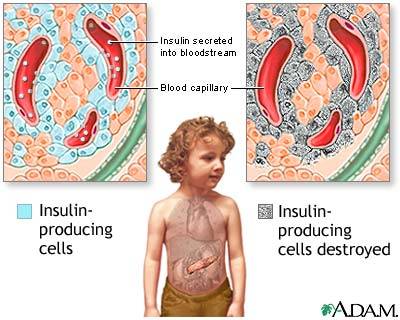Diabetes And Health Insurance: Good health insurance is important for everyone – although it’s especially important for diabetics, given the additional medication that is needed and the risk of complications. Despite this, it’s estimated that over a million Americans who suffer from diabetes don’t have any kind of health insurance. And as any diabetic knows, dealing with diabetes isn’t cheap – it costs around $13,000 per year for treatment.
Most people who don’t have health insurance are poor anyway, or unemployed and unable to take advantage of an employer’s health insurance; and there is some evidence of a link between poverty and diabetes – low income people tend to be more at risk of developing type 2 diabetes. In addition to a lack of medical treatment, they are also more likely to suffer from a poor diet and lack of exercise – both of which are risk factors for type 2 diabetes.
Even those of us who are diabetic and do have adequate health insurance can find that it isn’t always that easy to get treatment or medication covered. Some health insurance policies don’t cover basic diabetic needs, some policies require an extra surcharge for covering diabetes, and some health insurers won’t cover diabetes as they consider it to be a pre-existing condition.
It is possible to find health insurance specifically aimed at diabetics, although it can be difficult. Check any existing health insurance policy carefully to determine whether it covers your condition or not – if in doubt, call your insurance company and make sure you understand any exclusions. Your premium may also be lower if you can demonstrate that you have your condition under control.
If you are looking for new health insurance, try to find a company that specializes in diabetes coverage; the internet has made it fairly easy to compare products and services, although you may be quoted a better rate if you speak to an agent in person. If you know other people with diabetes, ask them – chances are that they have been in your situation and can recommend a health insurance company.
If you have group health insurance provided through your employer, you won’t have any problems with the issue of diabetes – by law, you are guaranteed coverage and can’t be turned down for any pre-existing condition. And if you let your existing policy lapse, or are taking out a new policy, a pre-existing condition will be fully covered after a year has elapsed.
Your options for health insurance that covers diabetes may also vary, depending on the state that you live in. As of the middle of 2008, over 45 states have some type of law in place that requires health insurance to provide coverage for diabetes. This coverage can include the cost of equipment and supplies used by patients at home, as well as the cost of any actual treatment.
Finding Health insurance can be difficult enough, but diabetics can also find it a challenge to find affordable and effective travel and life insurance, and it isn’t always easy to determine the exclusions by reading the fine print on policies. A travel insurance policy should include such things as treatment while overseas, emergency supplies of insulin and emergency transport back home.
As any diabetic knows, living with diabetes can be challenging enough – being able to enjoy adequate health insurance shouldn’t be a challenge too.
 Diabetes And Smoking: Despite the well documented dangers of smoking, an estimated 45 million people in the United States still smoke regularly – around 15% of the population. For an otherwise healthy person, cigarettes are unhealthy enough; for a person who suffers from diabetes, they can be even more detrimental to health. And even if you don’t smoke, exposure to so-called second hand smoke is almost as unhealthy.
Diabetes And Smoking: Despite the well documented dangers of smoking, an estimated 45 million people in the United States still smoke regularly – around 15% of the population. For an otherwise healthy person, cigarettes are unhealthy enough; for a person who suffers from diabetes, they can be even more detrimental to health. And even if you don’t smoke, exposure to so-called second hand smoke is almost as unhealthy. Diabetes
Diabetes 